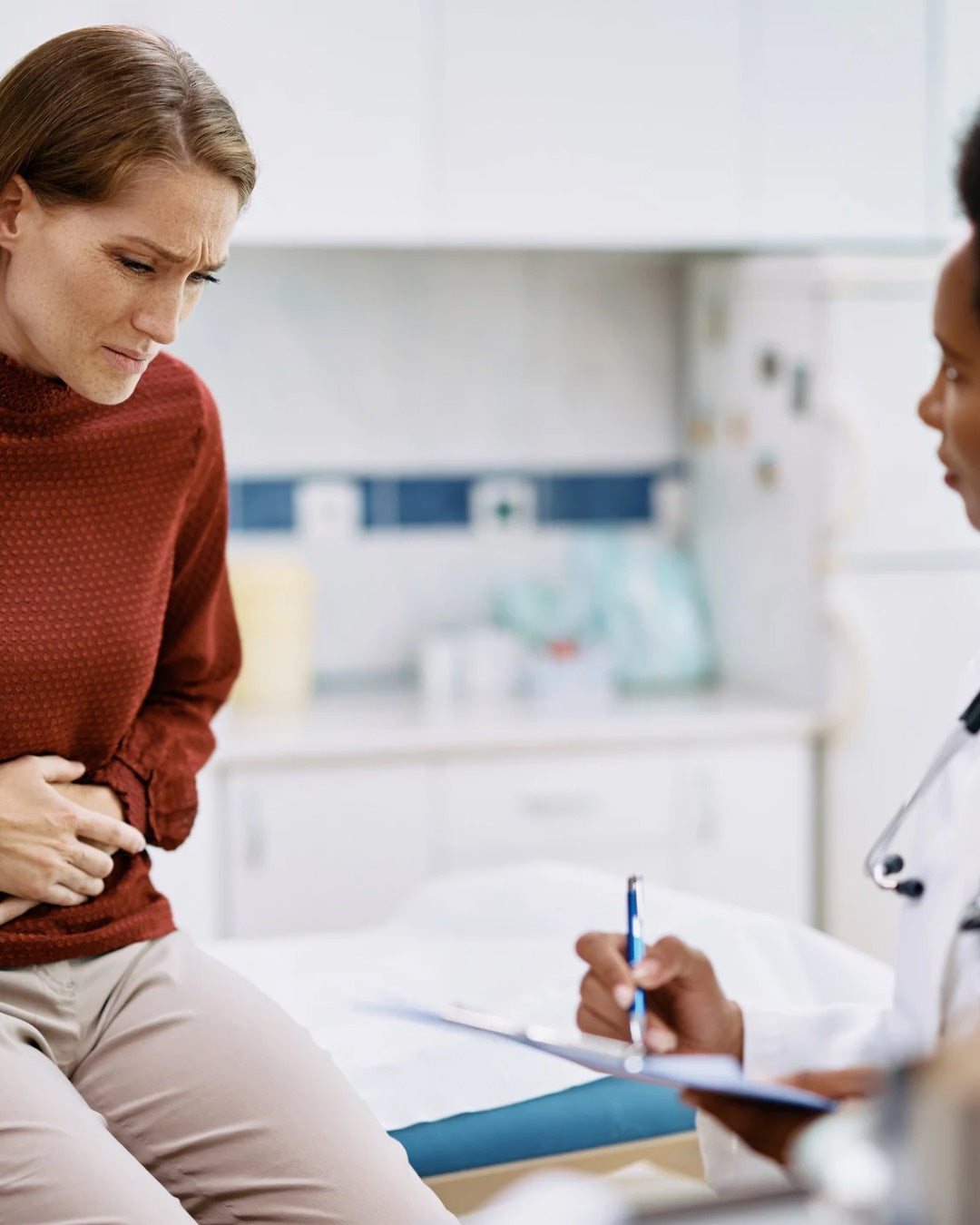
🌸 Endometriosis: Understanding the Silent Struggle Inside a Woman’s Hormones
Share
“It’s not just a bad period — it’s a full-body hormonal war.”
Endometriosis is more than just painful cramps. It’s a complex, chronic condition where tissue similar to the uterine lining starts growing outside the uterus. This tissue doesn’t belong there — and worse, it still acts like normal endometrial tissue: thickening, breaking down, and bleeding with every hormonal cycle.
But because it’s outside the uterus, this blood has nowhere to go, leading to inflammation, pain, scar tissue, and sometimes severe complications — especially related to fertility.
🔍 Common Signs and Symptoms of Endometriosis
While symptoms vary, here are the most reported ones:
Pelvic Pain: Chronic or cyclic, often intensifies during menstruation.
Painful Periods (Dysmenorrhea): Far beyond typical cramps — deep, stabbing, and sometimes debilitating.
Painful Intercourse (Dyspareunia): Pain during or after sex, especially deep penetration.
Pain During Bowel Movements or Urination: Especially during periods.
Heavy or Irregular Bleeding: Long periods, spotting, or bleeding between cycles.
Chronic Fatigue: Not just tired — bone-deep exhaustion.
Digestive Issues: Bloating (often called “endo belly”), constipation, nausea.
Infertility: For some, this is the first clue that something is wrong.

🔄 The Hormonal Hurricane: How Hormones Fuel Endometriosis
Hormones — particularly estrogen — play a central role in endometriosis. Think of estrogen as the fuel, and endometriosis as the fire. When estrogen levels rise (especially during the first half of the cycle), endometrial tissue — both inside and outside the uterus — grows and thickens.
Here’s what happens hormonally:
🌺 1. Estrogen Dominance
Women with endometriosis often have higher levels of estrogen or a sensitivity to it. Estrogen drives tissue growth. More estrogen = more endometrial buildup = more inflammation and pain.
❌ 2. Progesterone Resistance
Progesterone is supposed to balance out estrogen. But in endo, the body often becomes resistant to it. This means even if there’s enough progesterone, it can’t do its job, and estrogen runs wild.
🔥 3. Inflammatory Feedback Loop
Estrogen and inflammation feed each other. Higher estrogen → more tissue growth → more bleeding → more inflammation → higher estrogen response. It’s a vicious, hormone-driven cycle.
🧠 4. Impact on the Brain & Mood
The hormonal chaos can also affect the brain. Mood swings, depression, anxiety, and brain fog are common because of constant hormonal imbalance and chronic pain.
💥 What Is a Flare-Up — and Why Is It So Hard to Control?
A flare-up is when symptoms suddenly intensify — like a storm rolling in unannounced. It might be brought on by:
Menstrual cycle (rising estrogen)
Stress (increasing cortisol, which inflames the body)
Poor sleep
Certain foods (especially inflammatory or estrogenic ones)
Physical exertion
Hormonal contraceptive changes
Flare-ups are unpredictable and often debilitating, making everyday activities feel impossible.
During a a flare up, pain becomes sharp, bloating worsens, energy plummets, and everything feels inflamed. Some women describe it as "like glass shards in my pelvis" or "a hot knife twisting in my gut."

🕵️♀️ Why It's So Hard to Diagnose Without Surgery
One of the most heart-breaking aspects of endometriosis is how long it takes to be diagnosed — often 7 to 10 years on average.
Here’s why:
Symptoms mimic other conditions: IBS, pelvic inflammatory disease, ovarian cysts, and even anxiety.
There are no definitive blood tests.
Ultrasounds and MRIs often miss deep or hidden endo lesions.
Laparoscopy (a surgical procedure) is currently the only way to definitively diagnose it.
Women are often dismissed or misdiagnosed, told “it’s just period pain” or given birth control as a catch-all solution. This can lead to years of silent suffering and worsening symptoms.
🧬 The Deeper Impact: Endometriosis and the Whole Body
Endo doesn’t just affect your uterus — it’s a whole-body disease:
Reproductive system: Pain, infertility, ovarian cysts (endometriomas).
Digestive system: Bloating, constipation, diarrhea — especially if the lesions grow on the bowel.
Urinary system: Painful urination, frequency, or blood in urine.
Immune system: Chronic inflammation can lower immunity and increase fatigue.
Mental health: The constant hormonal chaos, pain, and medical gaslighting can trigger anxiety, depression, and trauma.

🛠️ Coping Without a Cure
There’s no cure — only management. And it’s different for everyone. Options include:
Hormonal therapy (birth control, GnRH agonists) to suppress estrogen.
Pain relief (NSAIDs, nerve blocks, medical cannabis in some cases).
Diet and lifestyle: Anti-inflammatory diets, yoga, acupuncture.
Surgical treatment (laparoscopic excision) — the most effective, but also not accessible for everyone.
🫶 Final Thoughts: You’re Not Crazy. You’re Not Alone.
Endometriosis is real, and it’s brutal — physically, emotionally, and hormonally. It’s time we start listening to women, believing their pain, and advocating for better education and diagnosis.
If you think you might have endo, trust your instincts. You don’t have to wait until it becomes unbearable to seek help.
